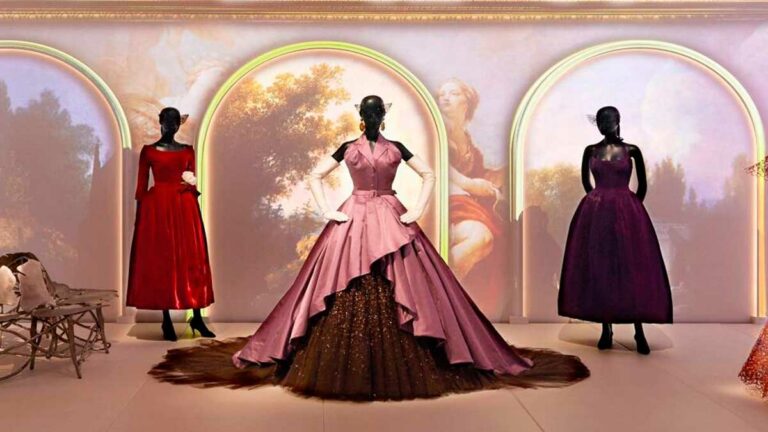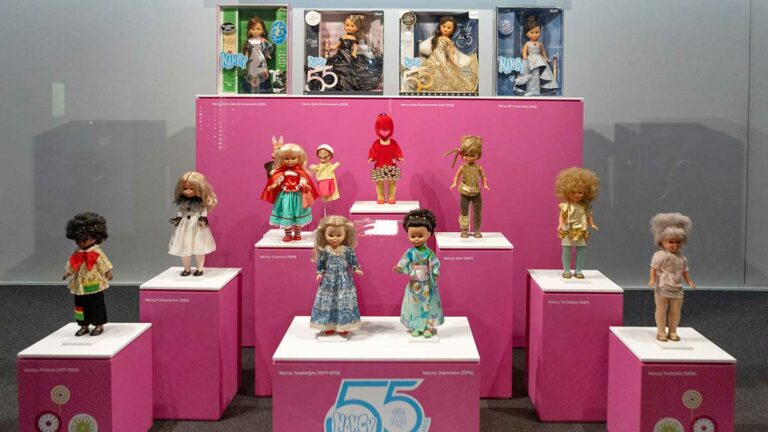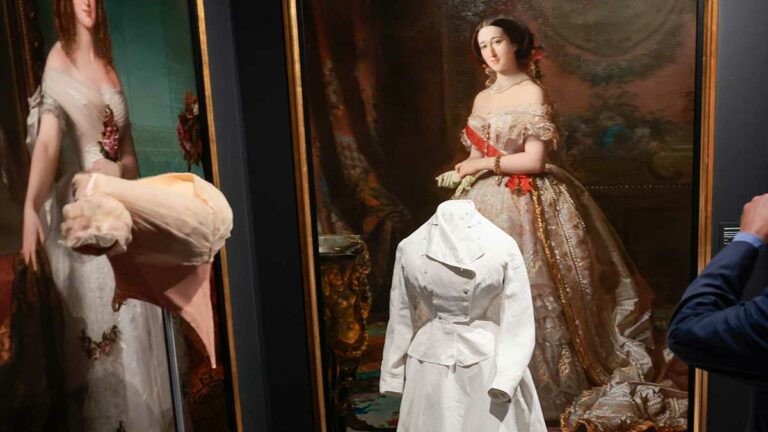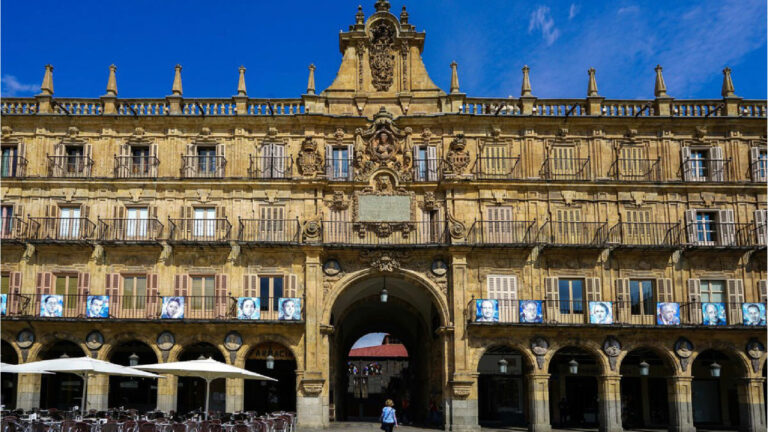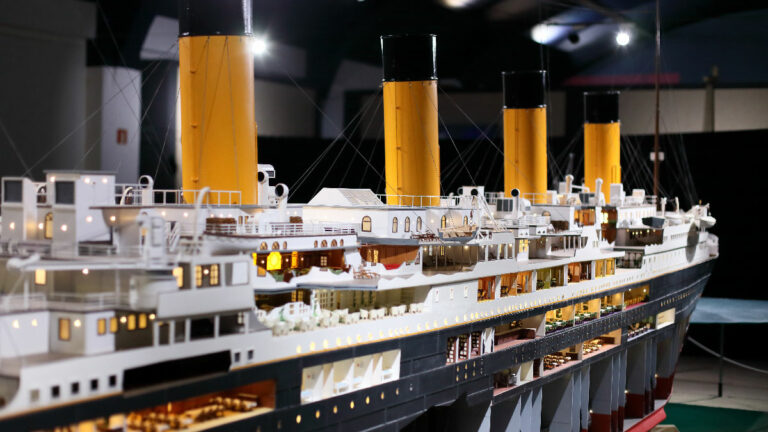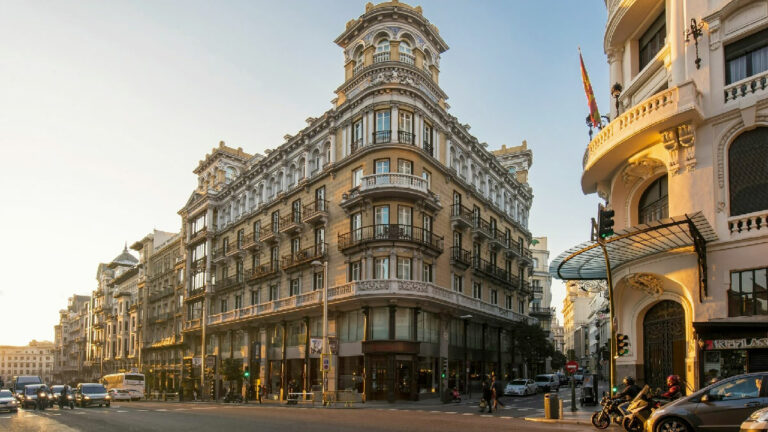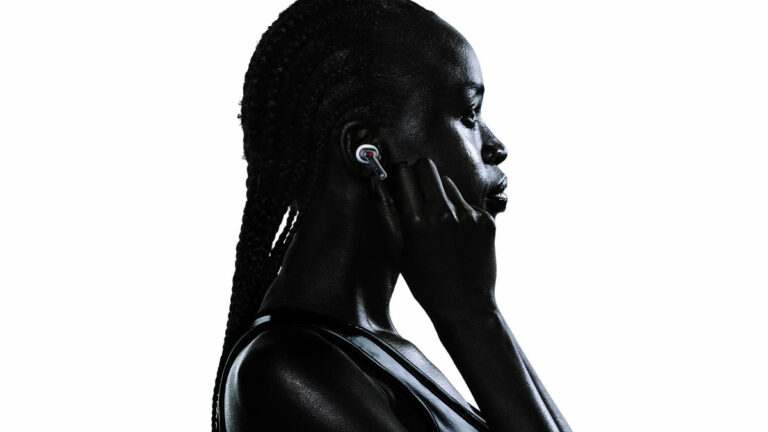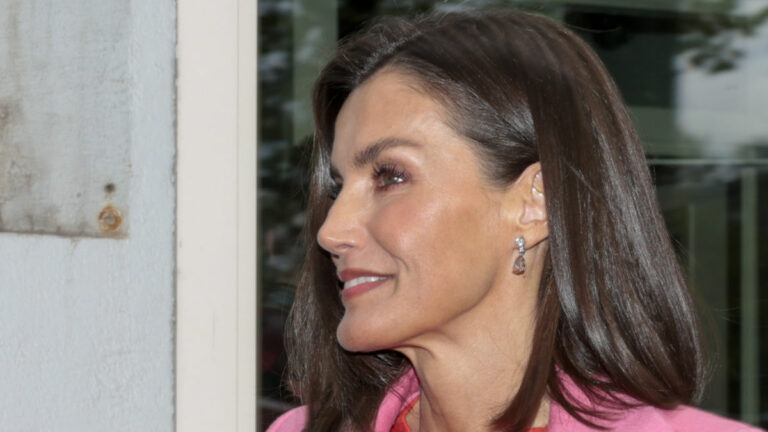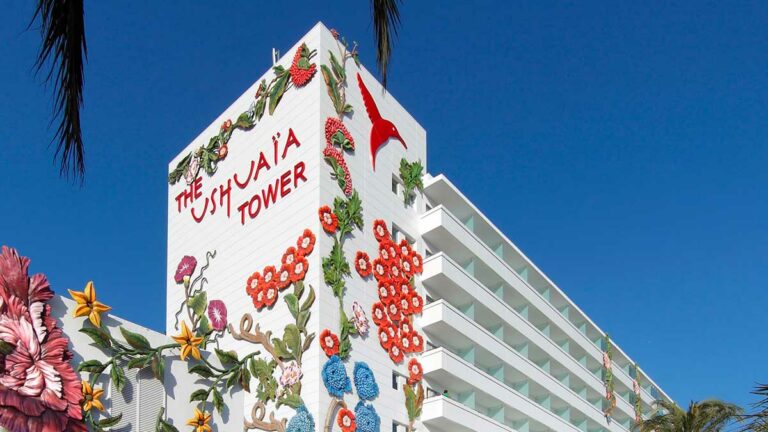Picasso in Court
Ny MoMA hosts an exceptional exhibition of works by Pablo Picasso that captivates and shows an unknown artist. Until 7 February.
Who would have thought that the ‘Bust of a woman» would create such a fuss! Obviously, I am not talking about any bust, but the «Bust of a Woman» Pablo Picasso’s sculpture created in 1931 that can be seen at MoMA in NY until February 7.
The main characters of this mess are the internationally well known art dealer Larry Gagosian, Maya Widmaier-Picasso, daughter of the sculptor, and Sheikh Abdulaziz Bin Jassim al-Thani of Qatar, a member of the royal family of Qatar. Sheikh says he bought the sculpture in November 2014 and the high-powered art dealer Larry Gagosian says he bought it too. The seller was, in both cases, Picasso’s daughter, Maya Widmaier-Picasso.
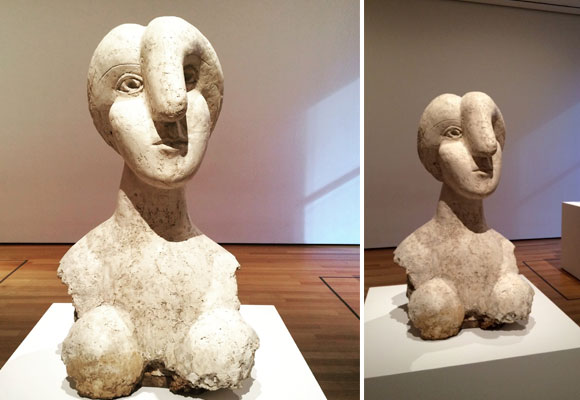
Gagosian claims to have bought it in May 2015 for $106 million and then sold it to a collector who expects to receive it once the exhibition at MoMA finishes. On the other hand, the legal representative of the royal family of Qatar maintains in its own court documents that he secured an agreement with Ms. Widmaier-Picasso to buy the piece in November 2014 for 38 million euros. As reported in the New York Times on January 16, the representatives of Qatar received a letter canceling the sale and refunding the money already paid. Perhaps the daughter of Picasso realized that the sculpture was more valuable than she thought and then she changed her mind!
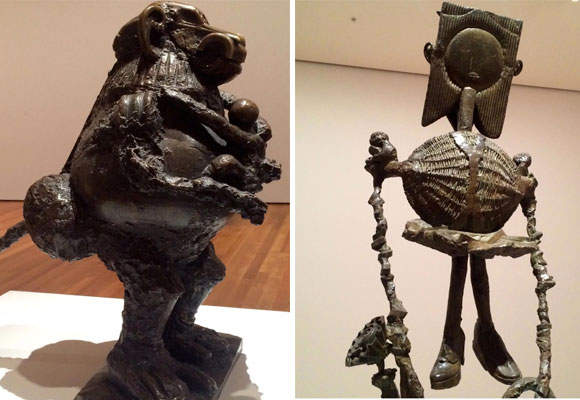
What an intrigue until the courts clarify the situation and decide in whose hands «Bust of woman» will end up! It would be great if the MoMA kept it until the verdict is reached. In any case, this is a good excuse to visit the exhibition before it ends and, if you cannot come, you can download the MoMA App and listen to the curators of the exhibition talking about it. If you visit it, use the application: you can listen the audio guide on your own phone, you can take photos with the application, share them with social media and then receive an email with the the walk you’ve done. I love having the audio guide handy and being able to take all the photos you want!
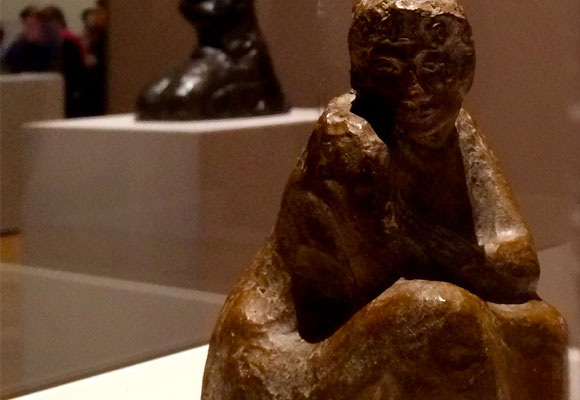
«Picasso sculpture» is an exhibition that occurs only once in lifetime: an exceptional exhibition for many reasons:
- The Picasso sculptures have rarely been exhibited. The first time was in 1966 in Paris and then in 1967 at the MoMA in NY.
- Nearly 50 years have passed since the last exhibition showing his sculptures in the US
- 140 works created over 62 years (1902-1964) are shown.
- The first sculpture created by the artist, «Seated Woman», 1902, and the latest maquette of Corten steel sculpture (that later would become a 50 foot tall sculpture that stands in Chicago’s Daley Plaza, 1967 and became one of the icons of the Chicago cityscape).
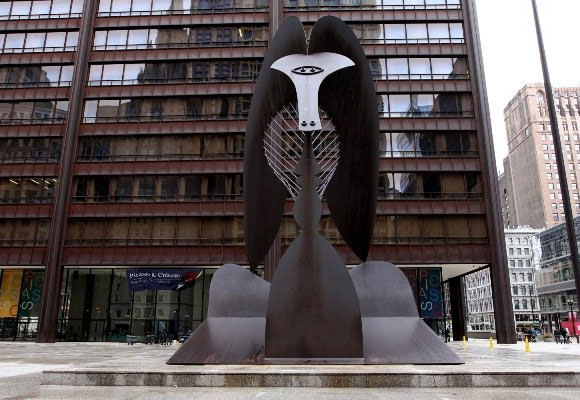
To honor this, the MoMA has moved the permanent collection from the fourth floor to place 140 arworks distributed along several galleries. I visited the exhibition twice and both times I asked to myself the same question: how is it possible that I didn’t have in my mind Picasso as a sculptor? The artwork shown is extensive and exceptional, totally innovative for the canons of that time and full of humor.

We do not think of Picasso as a sculptor but we should, because he was the one who earlier in the century (1914) hijacked, along with Georges Braque, two of the biggest artistic ideas of the century in the world of modern art: collage and three dimensional assemblage. Modern sculpture sets space within itself, volume and lightness begins. The best example of this: «Guitar», 1912.
With sculpture, Picasso managed to explore further his many gifts, if possible, without fear of being criticized. Exploded his versatility, his greed and the need to constantly reinvention. He did what he really wanted! He was a magician that turned everyday objects into sculptures: a tap could be the crest of a crane whose body and tail feathers were once a shovel or the handlebars and the saddle of a bicycle into a bull.
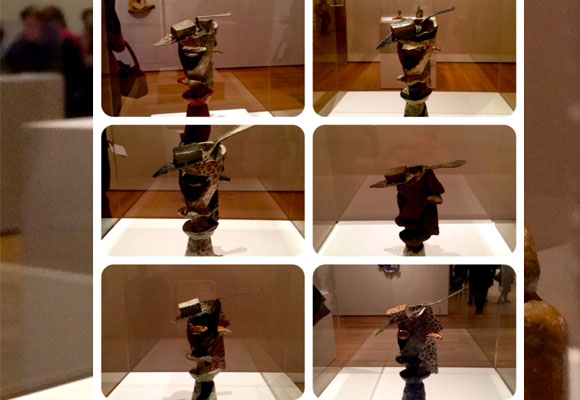
In his need to reinvent himself, Picasso broke forever from Renaissance tradition into modernist. He personalized the traditional bronze sculpture painting it. A good example is the «Glass of Absinthe» (1914): Picasso created an edition of six small abstract sculptures that represent the vessel at the time when absinthe used to be drunk and was very fashionable. He includes the spoon that was used to take the sugar cube. It is the first time that these six sculptures are displayed together, since they were in the artist’s studio. The exhibition opens with early sculptures by Picasso (1902-1909), when he was 20 years old. In them a mixture of tradition and innovation is
observed. These artworks were created at the same time than his Pink and Blue period in his painting.
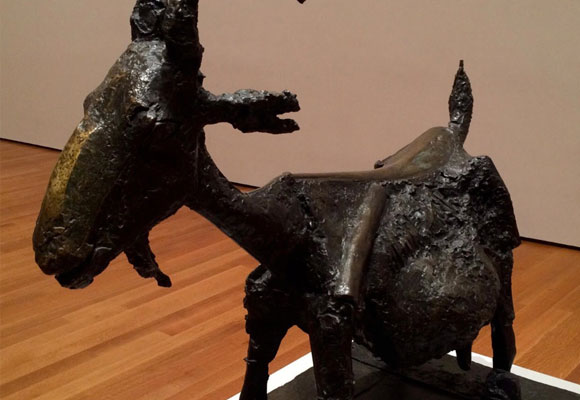
The second gallery shows the artwork created from 1912 to 1915, the same time as his cubist period. In this period he experiments with found materials, instead of working with traditional materials used for sculpture. «Guitar» and «Glass of absinthe» are good examples of the work of this period. «Guitar» broke the traditional idea of what was considered sculpture, a solid mass modeled or carved, created in marble or ceramic. Picasso opens sculpture into our eyes.
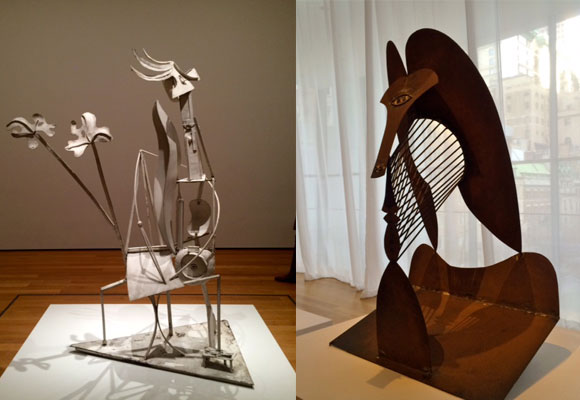
Picasso’s reengagement with sculpture at the end of the ’20s with the commissioning of a monument for the tomb of the poet and critic Guillaume Apollinaire. In this period, 1927 to 1931, he worked with metal in collaboration with his friend the sculptor Julio González who welcomed him in his study. The most significant work in this gallery is «Woman in the Garden», a work created for the tomb of the poet and made of metal and painted in white.
In 1930 Picasso purchased the Château de Boisgeloup, a property on the suburbs of Paris and for the first time, he had enough space to create their own sculpture studio. In this gallery you can see «Bust of a Woman,» whose ownership is disputed as I said at the beginning of this article, but in the MoMA’s dossier available to the public it says «Bust of Woman, 1931. Plaster. Private collection. Courtesy Gagosian Gallery», so I understand that it was already in the hands of Gagosian gallery and not at the Picasso’s family. We’ll see what the Court says.
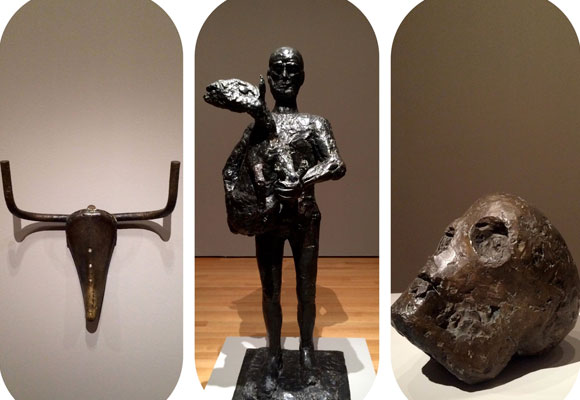
At the time of World War II, he was forced to work from his home in Paris (1939-1945). Picasso was one of the few artists condemmed by the Germans as «degenerate» to remain in occupied Paris during the war. Picasso was considered a radical and forbidden to exhibit and publication of his work was banned. Although all bronze casting was prohibited, as metal was reserved for wartime purposes, he managed to make sculpture with bronze, although mainly dedicated to work with plaster and clay.
After the World War, Picasso decides to visit the French Riviera for the first time in many years and reconnects with the classic art of Roman and Greek cultures, which brings a new phase in Picasso’s sculpture. He starts working with ceramics in his unique way. I feel he expressed freely doing everything in its own way, with courage and a sense of humor. Picasso used his inexperience in his own advantage. The owners of the ceramic workshop where he used to work said «an apprentice who works as Picasso will never get a job.»
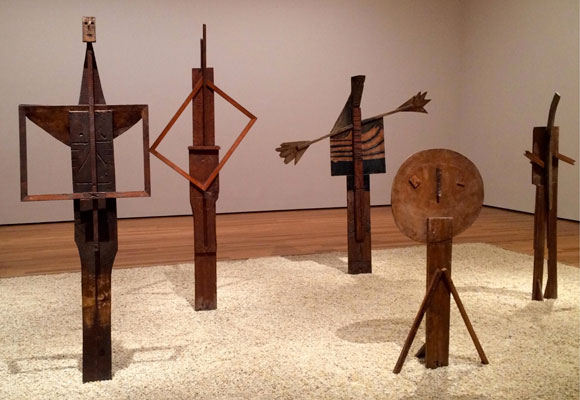
From 1952 to 1958 he starts to produce larger, more complex sculptures with everyday objects, sculptures that later would be cast in bronze. At that time he was partner with Françoise Gilot and the father of Claude and Paloma, so many of the objects he used to create the sculptures were toys for their children or represented everyday scenes that he lived: a little girl jumping rope, a woman walking her baby, a baboon with a head formed by Claude’s toy cars.
In this gallery, there is a set of sculptures made from driftwood that represent a family walking on the beach. Each figure has eyes and mouth and details of their bodies carved on the wood. I find this composition very amusing. In the final phase, Picasso focused on working with sheet metal (1954-1964). This period was a non-stop creative phase, only in one and a half years he produced more than 120 sculptures and returns to explore the interior of the sculpture as he did with «Guitar».
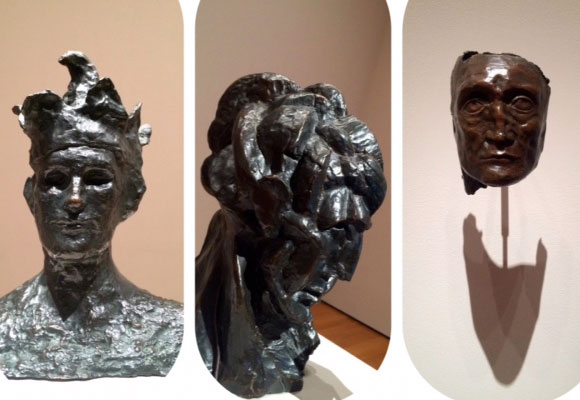
Picasso always dreamed of creating large-scale work, as he did with his paintings, as a great example the painting «Guernica» with 11′ 5″ x 25′ 6″ and can be seing at Museo Reina Sofia in Madrid. As Ann Temkin, curator of the exhibition mentioned: «Picasso did not like the idea of becoming art history. He wanted to be always involved in the present day and, I would say, even in the future. So it is very characteristic that in the last years of his life, even though he had already stopped making sculpture, he was still interested in being part of the contemporary project of creating large-scale sculpture for public spaces and thus be part of the lives of people as well as its sculpture was part of their daily lives. »
Once you have visited the exhibition you start questioning yourself why Picasso kept his sculptures so zealously. Ann Temkin says curator of the exhibition «Picasso kept most of his sculptures with him in his studio or at home. The round was not the way a collector but would have them distributed here and there, around him as he is having pets and I think that is why the sculptures have charisma and personality. » The sculpture was the medium which he could experiment freely and break the rules established without fear of damaging his reputation.
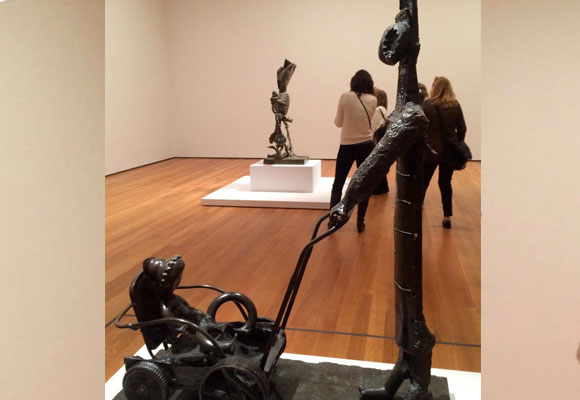
Now I find the whole meaning of one of his most famous quotes, «Art washes from the soul the dust of everyday life.» That is precisely what he was doing throughout his life and he has left to us as a gift to future generations. This exhibition has captivated me, I discovered a Picasso I did not know. What a capacity of hard work, creativity, experimentation, lack of fear of breaking the rules. A brilliant man like few others, a genius! But not for being a genius he limited his working hours!
You can visit the exhibition before February 7th and believe this is a lifetime exhibition. We must be grateful that MoMA put so much effort in getting together such as an exceptional work and displayed it throughout 9 galleries.

